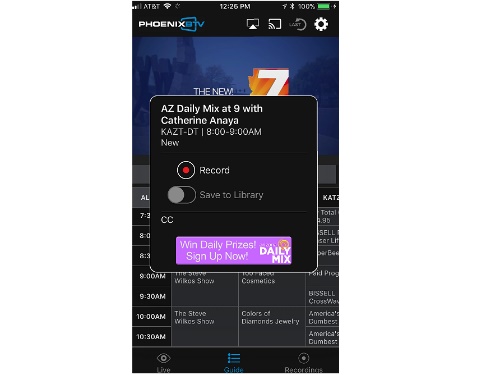Didja Raises $12M More to Fuel ‘LocalBTV’ Plans

Didja, the company behind a new OTT service that provides access to local broadcast networks, said it has landed a $12 million round of funding led by Vestech Partners as it aims to reach new markets, add features to its platforms, and broaden its business model.
Didja, which has raised $22 million so far, has introduced its service/app with certain local broadcast TV networks in two markets -- Phoenix, Ariz. (branded as PhoenixBTV), and in the San Francisco Bay Area (marketed as BayAreaBTV).
In the Bay Area, for example, Didja offers OTT access to 35 broadcast channels, including TV Azteca (Spanish), Skylink and U Channel (Chinese), DiyaTV (South Asian), Viet Bay and Net V (Vietnamese), and KPOP (South Korean music videos), and hopes to eventually score distribution deals that will enable it to offer the local feeds of majors like ABC, CBS, NBC and Fox.
Early on, Didja is focusing on bilingual homes and offering its apps on a localized basis for free, and pitching an optional cloud DVR service for $4.99 per month for 1 terabyte of storage. Didja obtains rights to carry broadcast TV channels on its apps; it captures the over-the-air TV feeds from partner programmers at a local data center and prepares them for streaming on supported devices in the local region.
RELATED: Didja Takes Dozens of TV Stations Over-the-Top in the Bay Area
The fresh funds will be used in part for expansion, including plans to enter Los Angeles in early 2018.
The new round will also be used to try out some new concepts and to bump marketing and try to expand channel counts in San Francisco, according to Jim Long, Didja’s CEO.
Multichannel Newsletter
The smarter way to stay on top of the multichannel video marketplace. Sign up below.
Some of that work involves a feature that drives viewers to download network apps and direct-to-consumer apps from other programmers and networks. Didja is starting to test that out with some stations in Phoenix.
Didja, Long added, also plans to experiment with some ideas that will enable its apps to support broadcasters in smaller markets.
Looking ahead, Didja is also noodling on a longer-term business model by which it would offer a package of local broadcast networks for about $15 per month – with about two-thirds of that going to the network partners.
Didja has generally focused on millennials and other younger audiences that tend to consume video on their mobile phones and to capture consumers who might be cord-cutters or have otherwise fallen out of the pay TV ecosystem.
Long believes Didja’s model will help local broadcasters broaden their viewership base and reach consumers they have trouble reaching today who, for example, are interested in watching broadcast TV channels but aren’t keen to using an antenna.
He said Didja will also be pursuing a larger “growth round” that would aim to include participation from large corporations, media companies and other investors.
RELATED: Didja Loses Set of Digi-Nets for Local OTT TV Offering
Didja’s approach hasn’t been without hiccups. Last month, for instance, its apps dropped Katz Broadcasting digi-nets -- Bounce, Escape and Grit – with the hope that their absence would be temporary.
“We’re working through that,” Long said, believing that what it will take to restore those networks on Didja’s platforms is “nothing that we think is insurmountable.”
